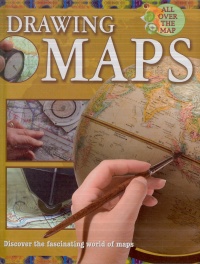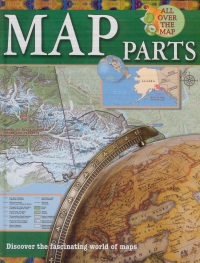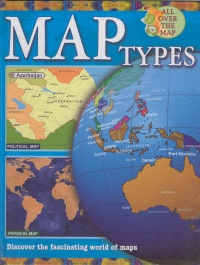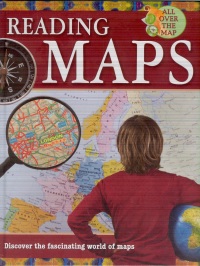| ________________
CM . . . . Volume XV Number 13. . . .February 20, 2009. 
 |
Drawing Maps. (All Over the Map).
Kate Torpie.
St. Catharines, ON: Crabtree, 2009.
32 pp., pbk. & hc., $9.95 (pbk.), $20.76 (hc.).
ISBN 978-0-7787-4272-2 (pbk.), ISBN 978-0-7787-4267-8 (RLB).
Subject Headings:
Map drawing-Juvenile literature.
Map reading-Juvenile literature.
Grades 2-5 / Ages 7-10.
Review by Harriet Zaidman.
***/4
|
 |
Map Parts. (All Over the Map).
Kate Torpie.
St. Catharines, ON: Crabtree, 2009.
32 pp., pbk. & hc., $9.95 (pbk.), $20.76 (hc.).
ISBN 978-0-7787-4273-9 (pbk.), ISBN 978-0-7787-4268-5 (RLB).
Subject Headings:
Map reading-Juvenile literature.
Maps-Juvenile literature.
Grades 2-5 / Ages 7-10.
Review by Harriet Zaidman.
***/4
|
 |
Map Types. (All Over the Map).
Ann Becker.
St. Catharines, ON: Crabtree, 2009.
32 pp., pbk. & hc., $9.95 (pbk.), $20.76 (hc.).
ISBN 978-0-7787-4274-6 (pbk.), ISBN 978-0-7787-4269-2 (RLB).
Subject Headings:
Maps-Juvenile literature.
Globes-Juvenile literature.
Grades 2-5 / Ages 7-10.
Review by Harriet Zaidman.
***/4
|
 |
Reading Maps. (All Over the Map).
Rolf Sandvold.
St. Catharines, ON: Crabtree, 2009.
32 pp., pbk. & hc., $9.95 (pbk.), $20.76 (hc.).
ISBN 978-0-7787-4275-3 (pbk.), ISBN 978-0-7787-4270-8 (RLB).
Subject Heading:
Map reading-Juvenile literature.
Grades 2-5 / Ages 7-10.
Review by Harriet Zaidman.
***/4
|
| |
|

In the era of Global Positioning Systems, is there a need to learn how to read maps? The answer is yes, of course. People need to know how to orient themselves in a location and to understand distances relative to one another.
Children love maps and globes and enjoy finding out where other countries are found. The topics of grid and scale are good ways to reinforce math skills. Legends excite the imagination and can lead to treasure hunts; maps that include home and neighbourhood landmarks also help teach children to be aware of their surroundings.
“All Over the Map” is a series that teaches children aged 7-10 about the purpose of maps, how they are drawn and read and the different types of maps. The series is more suitable to the U.S. market because the examples in each chapter use American cities, counties and states.
The books include bright, well-drawn and labeled maps that illustrate each chapter. A hip cartoon-looking boy named Max is the guide through each book, leading the narrative in the first person. His explanations are easy to understand:
A compass rose is a part on a map. The compass rose is used to show the positions of north, south, east and west. It is usually placed in the lower left-hand corner of a map. The compass rose is used to locate placed on a map using direction.
My house is in a neighborhood near the park and the beach. Look at the map below. The park is east of my neighborhood.
Can you find my neighborhood? Use the compass rose to help you find the direction east. Can you see the park east of my neighborhood? (From Map Parts)
Important words are clearly explained in the text and are bolded and defined in the glossary at the back of the book. Fact boxes, pictures and drawings are included, but they do not clutter the pages so that a young reader can still focus on the map. A table of contents lists the two-page chapters in the 32-page book. An index is found on the same page as the glossary.
This series could be very useful to the teaching of map concepts in the classroom although its complete American content might send a Canadian teacher to look for other publications.
Recommended.
Harriet Zaidman is a teacher-librarian in Winnipeg, MB.

To comment on this title or this review, send mail to
cm@umanitoba.ca.
Copyright © the Manitoba Library Association. Reproduction for personal use is permitted only if this copyright notice is maintained. Any other reproduction is prohibited without permission.
NEXT REVIEW |
TABLE OF CONTENTS FOR THIS ISSUE- February 20, 2009.
AUTHORS |
TITLES |
MEDIA REVIEWS |
PROFILES |
BACK ISSUES |
SEARCH |
CMARCHIVE |
HOME |



